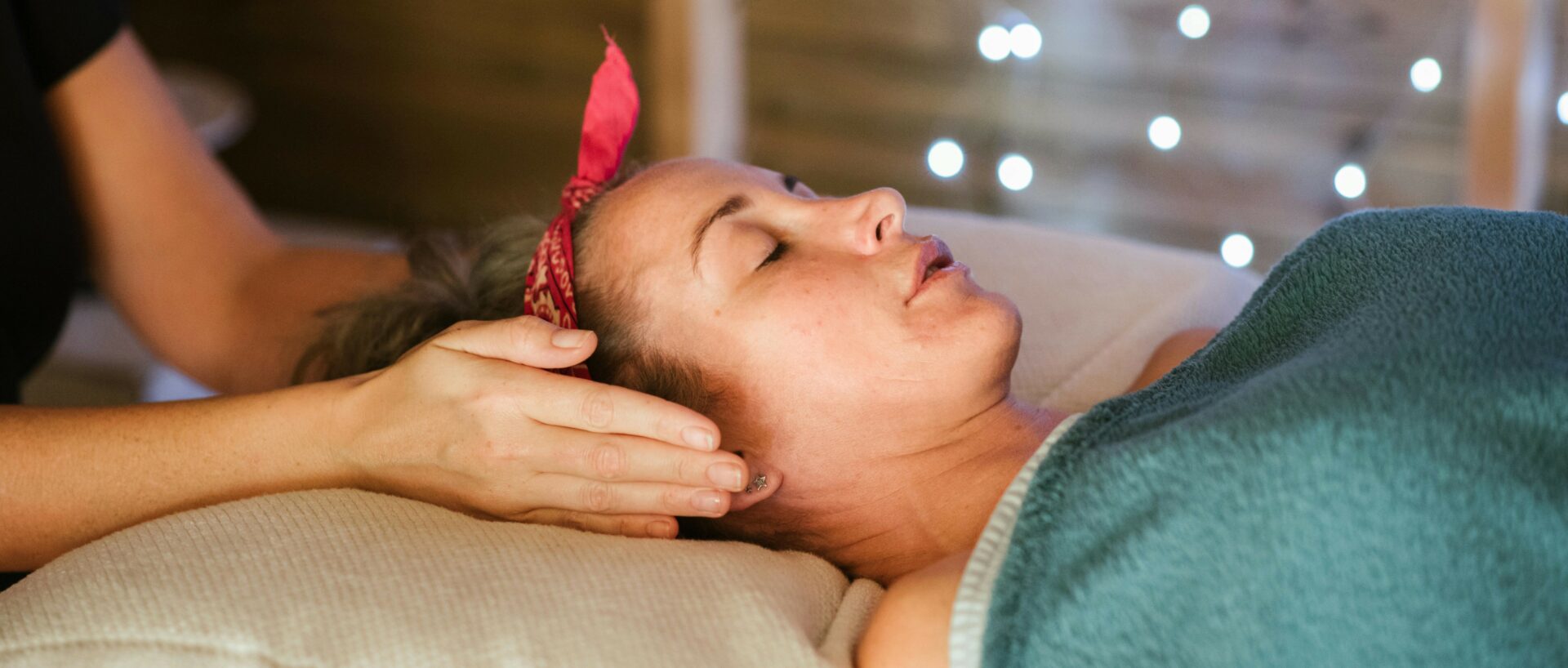If you haven’t yet heard of Reiki practice, it’s a Japanese energy healing technique that promotes stress reduction, relaxation, and healing. It’s administered by a trained practitioner through gentle touch (sometimes, no touch – just hands hovering inches above the body). It’s becoming more and more popular; there are at least 100 hospitals in the U.S. where Reiki is being offered. What’s it have to do with grief? We spoke with Reiki Master Alex Amorosi to learn more.
Can you say a little more about what kind of energy we’re talking about?
Sure, Reiki describes the universal life force; it’s a self-aware and intelligent energy that animates us and connects us. Your readers who take yoga classes or have received acupuncture may have heard of it referred to as “Chi.”
And what are you doing with that energy in the session?
I am mainly helping the Reiki energy go in to do the work. I don’t try to manipulate it. Also, I should say here that Reiki is never a substitute for medical or mental health care. It is not a miracle cure, like some people think. Also, it doesn’t replace therapy; it’s a tool that works well with therapy. In fact, many of my clients are already in therapy when they come to me.
Do people come to you specifically to heal their grief?
Yes, they do. Sometimes people come in because of recent grief they’re experiencing. A lot of times people will come in for something else, and I will feel in their body that they are holding grief for something that happened a long time ago that has gone kind of underground in their system. The grief has gotten stuck.
What do you do to unstick it; what happens during a session?
A session tends to last 60 minutes total, maybe 45 minutes of actual Reiki. First, I talk with the client about why they’ve come; then they lie down on the massage table, or sit in a chair if they are more comfortable. I begin to channel the Reiki through my hands and usually begin by gently placing my hands at top of my client’s head. If a client prefers not to be touched, I can easily do the work with my hands hovering eight to 12 inches from their body. My job is basically to let the Reiki flow so as to create an environment that makes their body feel safe to start bringing emotions to the surface so the client will be more conscious of them and can process them.
What does stuck grief feel like when you’re doing Reiki?
It often feels like sadness around the heart or lungs, and the energy there tends to feel heavy and kind of dense, like it wants to move but it can’t.
Does grief live elsewhere in the body, outside of the heart?
Sometimes I’ll feel grief in the client’s hands or arms, an extension of the heart. But often it’s contextual to how the person died. Like if the death made the griever feel helpless, the client might feel the stuck energy in their legs or hips. If the griever feels like they were somehow responsible for the death, they might feel it in their back, between the upper shoulder blades, with shoulders hunched forward, almost like resignation.
What happens if the client has a deep revelation during the treatment?
I always leave time at the end for the client to share their experience with me, and I let them lead. I might say, “I noticed some heaviness around the heart,” and if they share more, I’ll talk to them about it. But if not, I’ll let the body process it on their own because sometimes the client is not ready to consciously bring it up. If it feels like they might need deeper exploration, I might ask if they are in therapy or refer them to a therapist in my network if they’re interested.
What if our readers want to try Reiki; how should they find someone? And what if they can’t afford it?
First, you can ask a practitioner around you if they have a sliding scale for cost; many do. You can always google search reiki practitioners in your area, but I think the best way to find a good practitioner is word of mouth. Consider asking an acupuncturist, therapist, or other health providers you know for a referral.
 Alex Amorosi is a spiritual coach, yoga and meditation teacher, Reiki teacher, energy practitioner, and astrologer and has been practicing and teaching spiritual healing arts for over 25 years. He began his journey as an agnostic and skeptic, and has spent many years coming to understand the subtle realms of the mind and reality from a grounded analytical perspective. He’s been practicing Reiki since 2008, and training others since 2013. He has extensive knowledge of human energetic and physical anatomy from 20 years of teaching yoga and 15 years practicing and teaching Reiki and energy work.
Alex Amorosi is a spiritual coach, yoga and meditation teacher, Reiki teacher, energy practitioner, and astrologer and has been practicing and teaching spiritual healing arts for over 25 years. He began his journey as an agnostic and skeptic, and has spent many years coming to understand the subtle realms of the mind and reality from a grounded analytical perspective. He’s been practicing Reiki since 2008, and training others since 2013. He has extensive knowledge of human energetic and physical anatomy from 20 years of teaching yoga and 15 years practicing and teaching Reiki and energy work.

I am a Reiki master and a long time hospice volunteer, so I was quite interested in reading your article.
I thank you very much for publishing this information. .
Rose Reeser
Goof morning
I’m interested in learning and understanding more about reiki.